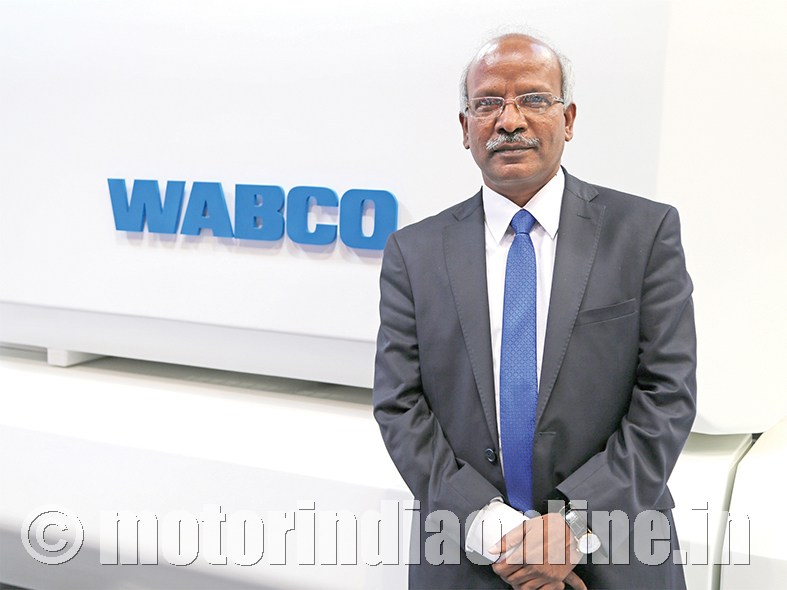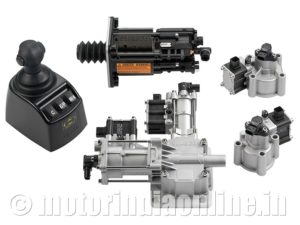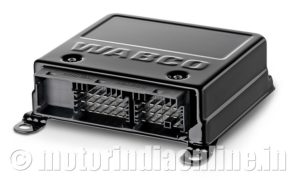As a leading supplier of technology, connectivity, and safety systems to the CV industry worldwide, WABCO is pioneering breakthrough innovations that bring industry-leading solutions to the bus industry in the country. Powered by its global vision for accident-free driving and greener transportation solutions, the company in India operates five manufacturing facilities across India, an advanced technology development center, a vehicle testing facility and a nation-wide aftermarket distribution and services network.

Managing Director of WABCO India Mr. P Kaniappan shared his insights on how his company views the way the bus industry is progressing, especially in critical areas of emission standards, in-cabin sophistication and rider comfort, braking, active safety technologies, and connectivity. Below are the excerpts and responses:
Trends and Transformations
In India, a robust infrastructure is on the making. The government is constantly working on improving connectivity by focusing on the road infrastructure and providing better facilities along highways and last-mile connectivity. Newer, more stringent emission norms are coming up, while emphasis on vehicular safety is also a major development lately. On the other hand, there is an increasing focus on building vehicle intelligence by enhancing software content in vehicles and the country is emerging as one of the major hubs for connected solutions for CVs. Big data and IoT will further enhance smart monitoring of vehicles, business execution tools through real time information system and driver assistance systems in India.
The leap from BS IV to BS VI by 2020 is going to be a key challenge for the industry, especially in adopting evolving technologies, maintain a steady supply chain and aftermarket support. The component suppliers have to carefully study the market dynamics and provide suitable technologies and solutions to stay committed towards safety, efficiency and connectivity of commercial vehicles.
Future-readiness
WABCO India is continuously working towards developing cost-effective and reliable solutions to assist these trends. A robust backend program for R&D to support the evolving Indian bus industry is coming up in the company. We have a lot to offer for telematics and cloud-based solutions to enhance the connectivity of fleets.
Further, mandatory fitment of ABS in buses and trucks has been a key turning point. Coupled with the introduction of BS IV, it has helped WABCO in transforming the whole vehicle into an intelligent unit. We are leveraging ABS beyond safety to emphasize on the benefits of the technology in helping improve tire life and optimize fuel efficiency. We introduced ABS in the aftermarket through the retrofit route and fitted it in over 50,000 vehicles that resulted in significant improvement in road safety until the Government of India mandating ABS legislation.
BS IV has also helped to catalyse the introduction of AMT in India in 2017. The stricter safety norms will help WABCO in working closely with bus manufacturers to further penetrate the Indian market and introduce newer technologies for the benefit of its customers. WABCO’s solutions including ABS, AMT, Electronic Braking Systems and Air Disc Brakes are among the key technologies, which will assist us in enhancing the safety of buses and commercial vehicles.
Tech adoption in India
Indian bus makers are leveraging technology to tackle transportation and transit challenges in the country. Intelligent systems, advanced collision mitigation systems, lane departure warning systems, advanced emergency braking systems are few of the technological innovations being adopted by Indian OEMs to enhance the value of the fleets in India and make it more cost-effective in long-term. They follow global development norms to support the requirements of modern bus fleets.
Automating bus transmission
WABCO is at the forefront of automatic transmission revolution in the country. Automated transmissions like our ‘OptiDrive’ AMT add value to both the product makers and their users. For automakers, it offers reduced vehicle weight, absence of clutch pedal, no need for synchronisation and simplifies the assembly of the system. It offers operational reliability to OEMs, where there is no scope for errors in gearshift, while also ensuring simple-yet- robust design of components.
The end users, on the other hand, benefit from extended clutch and transmission life, increased fuel economy, and enhanced drivability. It offers less gear change, reduces clutch errors, and allows precise and fast selection of gears, especially in challenging situations. This results in less stress for the drivers in congested city traffic.
OptiDrive is a modular transmission automation technology that can be easily adapted to a wide range of existing manual gearboxes, providing an alternative, cost effective, and reliable solution for CVs, buses in particular. It combines comfort and ease-of-use of an automatic transmission, while retaining the efficiency of manual gearboxes.
“A robust backend program for R&D to support the evolving Indian bus industry is coming up in the company. We have a lot to offer for telematic and cloud-based solutions to enhance the connectivity of fleets.
– Mr. P. Kaniappan
WABCO’s latest technology portfolio for buses
* PAN range of Air Disc Brakes (ADB) – offers better performance compared to drum brakes in terms of stopping distance reduction, consistent performance during repeated braking in city operation and eliminating the pull while braking at high speeds.
* Modular Door Control Systems – an ECU based door control system enough to handle virtually all mass transit niches.
* ESCsmart Electronic Stability Control – an active safety system that monitors the roll and directional stability of vehicles during difficult maneuver and terrain conditions. It increases vehicle stability during maneuvers such as cornering and lane changes and automatically intervenes when a high risk of instability is detected.
* OptiRide Electronically Controlled Air Suspension (ECAS) – the best-selling solution for electronic control of air suspension globally, which delivers fuel savings of up to 3 percent on specific applications, while providing optimal ride performance.
* OptiTire™ Tire Pressure Monitoring System – first tire pressure monitoring system developed for commercial vehicles. It offers external and internal sensors and is based on a single system. The system is designed to work across a spectrum of CVs, including buses. It lowers fleet running costs, maximizes tire life and reduces breakdowns. It assures fuel saving by up to 2 percent as well.
* WABCO’s Fleet Management Solutions (FMS) – provides accurate vehicle information updates through live tracking and vehicle activity monitoring, including its fuel consumption, vehicle utilization and performance.
* Lane Departure Warning System (OnLane) – equipped with a forward-looking camera for active lane correction.
* Autonomous Emergency Braking System (OnGuard) – alerts the driver to potentially critical driving situations via acoustic, visual and haptic signals. Should the vehicle operator fail to take corrective action, the system provides active braking on moving, stopping and stationary vehicles to mitigate or prevent impending rear-end collisions.

